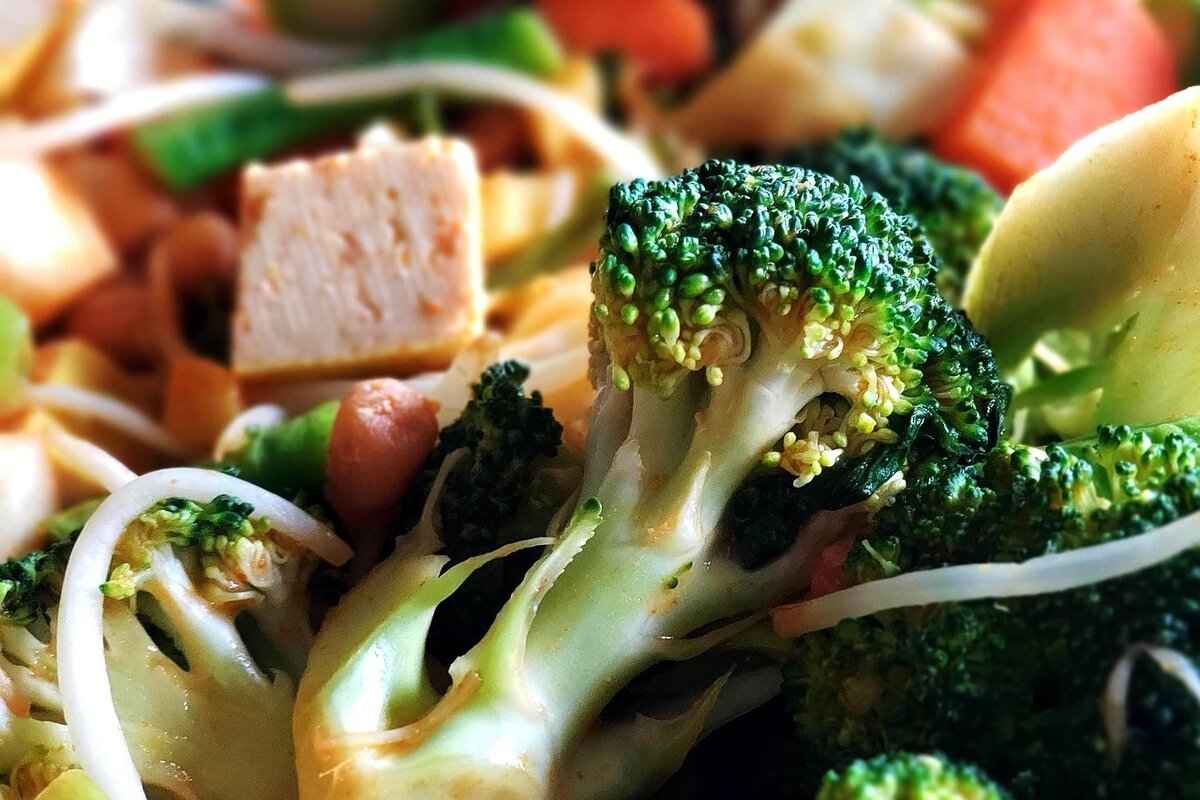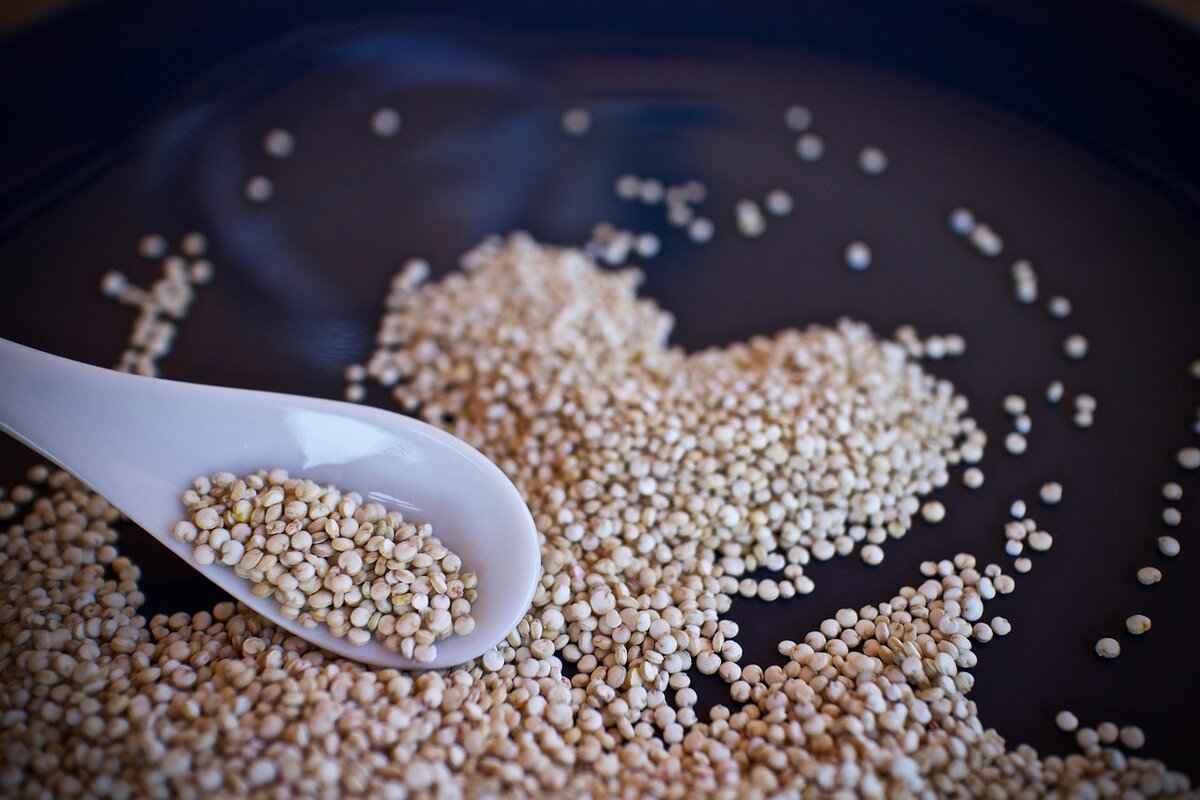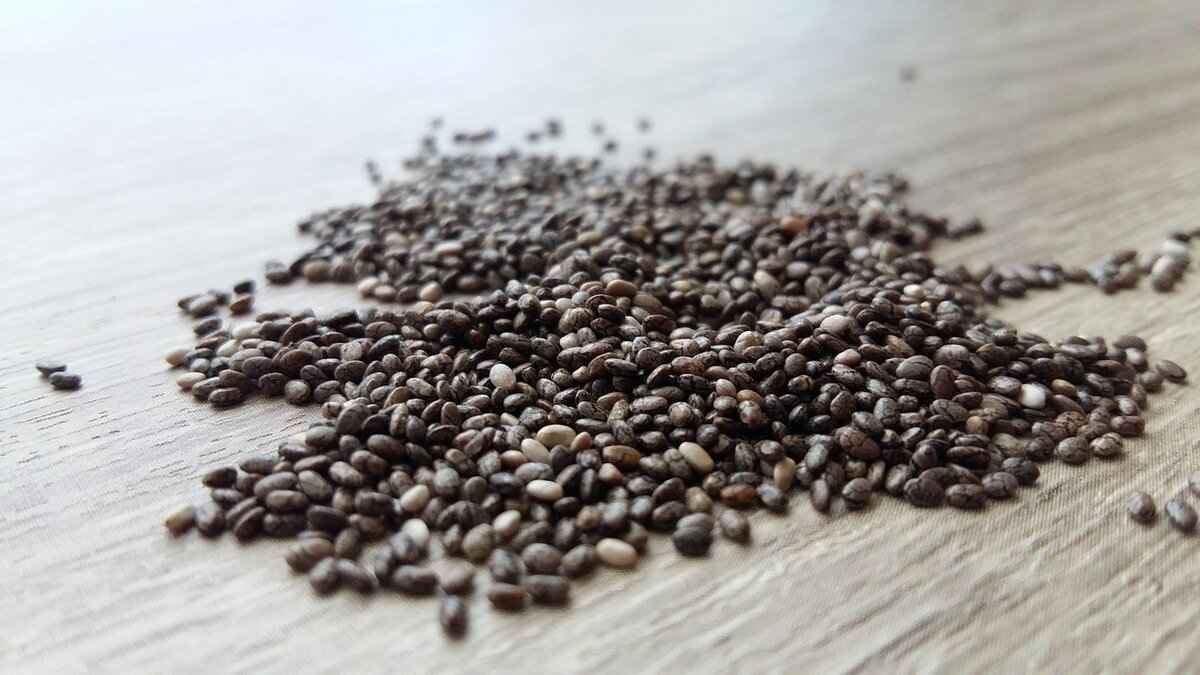Asian cuisine is renowned for its rich flavors and diverse ingredients, many of which are excellent sources of plant-based protein. By exploring these ingredients, you can not only enjoy delicious meals but also embrace a healthier lifestyle. This article delves into the variety of plant-based protein sources commonly used in Asian cooking, highlighting their nutritional benefits and culinary applications.
What Are the Top Plant-Based Protein Sources in Asian Cuisine?
In Asian cooking, several plant-based protein sources stand out. These include:
- Legumes: Lentils, chickpeas, and mung beans are rich in protein and essential nutrients.
- Grains: Quinoa, brown rice, and barley provide both carbohydrates and protein.
- Soy Products: Tofu, tempeh, and edamame are versatile and protein-rich.
How Do Legumes Enhance Protein Content in Asian Dishes?
Legumes are a staple in many Asian recipes. For instance, mung beans are used in soups and salads, while chickpeas add a unique flavor to curries. These ingredients not only boost protein content but also provide dietary fiber and essential vitamins, making them an excellent choice for a balanced diet.
Exploring the Versatility of Mung Beans
Mung beans are incredibly versatile and can be used in various dishes, from savory soups to sweet desserts. Their ability to absorb flavors makes them a favorite in many Asian cuisines.
Health Benefits of Mung Beans
Mung beans are packed with protein, antioxidants, and dietary fiber, contributing to heart health and aiding digestion. Incorporating them into your diet can significantly enhance your overall health.
Cooking Techniques for Mung Beans
To maximize the nutritional benefits of mung beans, consider methods like soaking, sprouting, and boiling. These techniques not only enhance their flavor but also improve their digestibility.
Incorporating Chickpeas into Asian Recipes
Chickpeas are becoming increasingly popular in Asian cuisine. They can be added to stir-fries and curries, offering a unique texture and flavor while boosting protein intake.
Why is Tofu a Staple Protein Source in Asian Cooking?
Tofu, derived from soybeans, is a highly versatile ingredient. It is favored for its high protein content and adaptability in various dishes, appealing to both vegetarians and meat-eaters.
Different Types of Tofu and Their Uses
Tofu comes in various forms, including silken, soft, and firm. Each type serves different culinary purposes, from blending in smoothies to grilling in stir-fries.
Health Benefits of Tofu Consumption
Tofu is not just a source of protein; it also contains essential amino acids, calcium, and iron. Regular consumption can promote overall health and wellness.
What Role Do Whole Grains Play in Plant-Based Protein?
Whole grains are integral to Asian cooking. They provide carbohydrates, protein, and fiber, contributing to balanced meals. Quinoa, in particular, is a complete protein, containing all nine essential amino acids.
Cooking Whole Grains for Maximum Nutrition
To retain the nutritional benefits of whole grains, proper cooking techniques are essential. Rinsing grains before cooking and using the right water-to-grain ratio can enhance flavor and texture.
How Can You Combine Ingredients for Complete Proteins?
Combining different plant-based protein sources can create complete proteins. For example, pairing rice with beans or lentils with quinoa enhances the nutritional profile of your meals.
Examples of Protein Combinations in Asian Cooking
Popular combinations such as rice and lentils or chickpeas and quinoa not only provide balanced nutrition but also maintain the traditional flavors of Asian dishes.
Tips for Meal Planning with Plant-Based Proteins
Effective meal planning is crucial for incorporating diverse plant-based proteins into your diet. Aim for variety and balance to ensure you meet your nutritional needs while enjoying the rich flavors of Asian cuisine.

What Are the Top Plant-Based Protein Sources in Asian Cuisine?
In recent years, there has been a growing interest in plant-based diets, particularly within the realm of Asian cuisine. This culinary tradition is rich in a variety of ingredients that not only provide flavor but also serve as excellent sources of protein. From legumes to grains and soy products, Asian cooking offers an array of options that are both nutritious and versatile. Let’s delve deeper into the top plant-based protein sources commonly used in this vibrant cuisine.
Asian cooking showcases a multitude of plant-based protein sources that are essential for a balanced diet. Here are some of the most popular:
- Legumes: Including lentils, chickpeas, and black beans, these are staples in many Asian dishes, providing not just protein but also fiber and essential vitamins.
- Soy Products: Tofu, tempeh, and edamame are rich in protein and can be used in a variety of dishes, from stir-fries to soups.
- Whole Grains: Quinoa, brown rice, and barley are significant sources of protein and provide complex carbohydrates for sustained energy.
Legumes are a cornerstone of many traditional Asian diets. For instance, mung beans are frequently used in soups and desserts, while chickpeas are becoming increasingly popular in curries and salads. They not only enhance the protein content but also add a rich texture and flavor to dishes.
Tofu is perhaps the most recognizable plant-based protein in Asian cuisine. Made from soybeans, it is incredibly versatile. Whether you prefer it silken for smoothies or firm for stir-fries, tofu can absorb flavors from spices and sauces, making it a favorite among both vegetarians and meat-eaters.
Whole grains are not only a source of carbohydrates but also contribute significantly to protein intake. Quinoa is particularly notable as it is a complete protein, containing all nine essential amino acids. This makes it an excellent choice for those looking to enhance their protein consumption without animal products.
Combining different plant-based protein sources can create complete proteins, which are vital for overall health. For example, pairing rice with beans or lentils with quinoa ensures that you receive all the essential amino acids your body needs.
Incorporating plant-based proteins into your meals can be both rewarding and delicious. Here are some practical tips:
- Plan Ahead: Prepare a weekly meal plan that includes a variety of legumes, grains, and soy products.
- Experiment with Recipes: Try new dishes that feature these ingredients, such as stir-fries, curries, and salads.
- Batch Cook: Prepare larger quantities of legumes and grains to use throughout the week, saving time and ensuring you have healthy options on hand.
By exploring these plant-based protein sources in Asian cooking, you can not only enjoy delicious meals but also promote a healthier lifestyle. The versatility of these ingredients allows for endless culinary creativity, making it easier than ever to incorporate nutritious options into your diet.

How Do Legumes Enhance Protein Content in Asian Dishes?
Legumes are an integral part of Asian cuisine, offering not only a rich source of plant-based protein but also a plethora of nutritional benefits. Varieties such as lentils, chickpeas, and mung beans are commonly incorporated into traditional dishes, enhancing both flavor and health value. These ingredients are not just fillers; they play a pivotal role in creating balanced meals that support a healthy lifestyle.
Legumes are celebrated in Asian cooking for their versatility and nutritional density. They are rich in fiber, which aids digestion, and they provide essential vitamins and minerals, making them a vital component of various dishes. For instance, lentils are often used in soups and curries, offering a hearty texture and a wealth of nutrients, while chickpeas add a unique flavor and are increasingly popular in stir-fries and salads.
The incorporation of legumes into meals significantly boosts the overall protein content. For example, a serving of cooked lentils contains about 18 grams of protein and is an excellent source of iron and folate. Chickpeas, on the other hand, provide around 15 grams of protein per cooked cup, along with valuable fiber that promotes satiety and digestive health. Mung beans, often used in Asian desserts and savory dishes, are not only high in protein but also rich in antioxidants, adding an extra layer of health benefits.
- Lentils: Commonly used in dal, a staple dish in Indian cuisine, lentils are simmered with spices to create a flavorful and nutritious meal.
- Chickpeas: These legumes are often found in curries and salads, where they provide a satisfying bite and absorb surrounding flavors beautifully.
- Mung Beans: Often sprouted for added nutrition, mung beans can be used in soups, stir-fries, and even desserts, showcasing their versatility.
Including legumes in your diet offers numerous health benefits. They are known to regulate blood sugar levels, making them an excellent choice for those managing diabetes. Their high fiber content can help lower cholesterol levels and reduce the risk of heart disease. Furthermore, the protein derived from legumes is crucial for muscle repair and overall bodily function, making them an ideal choice for vegetarians and vegans.
Incorporating legumes into your diet can be simple and enjoyable. Here are a few practical tips:
- Start with Soups: Add lentils or chickpeas to your favorite soup recipes for a protein boost.
- Mix into Salads: Toss cooked chickpeas or mung beans into salads for added texture and nutrition.
- Experiment with Dips: Blend chickpeas into hummus or other dips for a healthy snack.
In summary, legumes such as lentils, chickpeas, and mung beans are not only staples in many Asian recipes but also contribute significantly to the protein content and overall nutritional value of meals. Their versatility allows for a wide range of culinary applications, making them an essential component of a balanced diet.
Exploring the Versatility of Mung Beans
Mung beans are an incredibly versatile ingredient in Asian cooking, celebrated for their nutritional value and culinary flexibility. These small, green legumes are not only a staple in many traditional dishes but also a popular choice for modern health-conscious eaters. Their ability to adapt to various cooking methods and flavor profiles makes them an essential component in a wide range of recipes.
Rich in protein, fiber, and essential vitamins, mung beans offer numerous health benefits. They contain high levels of antioxidants, which help combat oxidative stress in the body. Additionally, mung beans are low in calories, making them an excellent choice for those looking to maintain a healthy weight while still enjoying satisfying meals.
Mung beans can be found in a variety of dishes across Asian cuisines:
- Soups: Mung beans are often used in hearty soups, where they add texture and a wholesome flavor. They can be cooked with spices and vegetables to create nourishing broths.
- Salads: Sprouted mung beans are a popular addition to salads, providing a crunchy texture and a fresh taste. They can be combined with other vegetables and dressings for a nutritious meal.
- Desserts: In many Asian cultures, mung beans are used in sweet dishes, such as mung bean paste, which is a common filling for pastries and desserts.
To maximize the flavor and nutritional benefits of mung beans, consider the following cooking techniques:
- Soaking: Soaking mung beans before cooking can help reduce cooking time and improve digestibility.
- Sprouting: Sprouted mung beans are not only more nutritious but also have a delightful crunch. Sprouting can be done easily at home with minimal equipment.
- Boiling: Boiling mung beans until tender allows them to absorb flavors from the broth or spices, making them a delicious addition to various dishes.
Incorporating mung beans into your meals can lead to numerous health benefits:
- Heart Health: Their high fiber content can help lower cholesterol levels, promoting better heart health.
- Digestive Health: The fiber in mung beans aids digestion and helps maintain a healthy gut.
- Blood Sugar Control: Mung beans have a low glycemic index, making them a suitable option for those managing blood sugar levels.
Adding mung beans to your diet is easy and versatile:
- Use them in stir-fries for added protein.
- Add them to curries for a hearty texture.
- Blend cooked mung beans into smoothies for a nutritious boost.
In summary, mung beans are a fantastic ingredient in Asian cooking, offering a wealth of nutritional benefits and culinary versatility. Whether you enjoy them in savory dishes or sweet treats, they can easily be integrated into a variety of meals, making them a valuable addition to a balanced diet.
Health Benefits of Mung Beans
Mung beans, scientifically known as Vigna radiata, are an incredibly nutritious legume that has been a staple in Asian cuisine for centuries. Their rich profile makes them a popular choice for those seeking to enhance their health through diet. Let’s delve into the numerous health benefits of mung beans and why they should be a part of your meals.
Mung beans are often hailed as a superfood due to their impressive nutritional content. They are packed with protein, providing about 24 grams of protein per 100 grams, which is essential for muscle repair and growth. This makes them an excellent choice for vegetarians and vegans looking to meet their protein needs.
One of the standout features of mung beans is their high level of antioxidants. These compounds help neutralize harmful free radicals in the body, reducing oxidative stress and lowering the risk of chronic diseases such as heart disease and cancer. The presence of vitamins A, C, and E further enhances their antioxidant properties, supporting overall health.
Mung beans are an excellent source of dietary fiber, which plays a crucial role in digestive health. A serving of mung beans can provide up to 16 grams of fiber, promoting regular bowel movements and preventing constipation. Additionally, fiber helps maintain a healthy gut microbiome, which is essential for overall well-being.
The combination of protein, fiber, and antioxidants in mung beans contributes significantly to heart health. Regular consumption can help lower cholesterol levels, reduce blood pressure, and improve overall cardiovascular function. This makes mung beans an ideal addition to heart-healthy diets.
Incorporating mung beans into your diet can also assist in weight management. Their high fiber content promotes satiety, helping to control appetite and reduce overall calorie intake. Furthermore, they are low in calories yet nutrient-dense, making them a smart choice for those looking to maintain or lose weight.
- Soups and Stews: Add boiled mung beans to soups for added texture and nutrition.
- Salads: Toss sprouted mung beans into salads for a crunchy, nutritious boost.
- Desserts: Use mung bean paste in traditional Asian desserts for a sweet treat.
- Stir-fries: Include mung beans in stir-fries for a protein-packed meal.
To maximize the health benefits of mung beans, consider various cooking methods:
- Soaking: Soak mung beans for a few hours before cooking to reduce cooking time and enhance digestibility.
- Sprouting: Sprouted mung beans can be eaten raw or cooked, increasing their nutritional value.
- Boiling: Boil mung beans until tender for use in a variety of dishes.
In summary, mung beans are a powerhouse of nutrition, offering a wide range of health benefits that make them a valuable addition to any diet. Whether you enjoy them in savory dishes or sweet treats, their versatility and health-promoting properties make them a true superfood.
Cooking Techniques for Mung Beans
Mung beans are not only a staple in many Asian cuisines but also a highly nutritious ingredient that can enhance the flavor and health benefits of your dishes. Learning the right cooking techniques for mung beans, including soaking, sprouting, and boiling, can significantly improve their taste and nutritional value.
Soaking mung beans is an essential first step that helps to reduce cooking time and improve digestibility. By soaking them for at least 4-6 hours or overnight, you allow the beans to absorb water, which activates enzymes that begin the germination process. This not only makes them easier to cook but also enhances their nutritional profile by increasing the availability of vitamins and minerals.
Sprouting mung beans takes the nutritional benefits to another level. When you sprout, the beans undergo a transformation that increases their protein content and makes them rich in vitamins such as vitamin C and various B vitamins. To sprout mung beans, simply soak them, rinse, and drain. Place them in a jar or sprouter, keeping them moist and dark for about 2-3 days until you see tiny sprouts. These can be added to salads, stir-fries, or eaten raw for a crunchy texture.
Boiling is one of the most common methods of cooking mung beans. After soaking, rinse the beans and place them in a pot with fresh water. For every cup of mung beans, use about 3 cups of water. Bring the mixture to a boil, then reduce the heat and let it simmer for 20-30 minutes until tender. Adding spices, herbs, or aromatics like garlic and ginger during the boiling process can further enhance the flavor of the beans.
- In Soups: Mung beans can be added to vegetable or meat-based soups for added protein.
- In Salads: Toss cooked mung beans into salads for a nutritious boost.
- In Desserts: They can also be used in traditional Asian desserts, such as mung bean paste.
After cooking, mung beans can be stored in an airtight container in the refrigerator for up to a week. For longer storage, consider freezing them. Spread the cooled beans on a baking sheet, freeze until solid, and then transfer them to a freezer bag. This way, you can have cooked mung beans ready for quick meals anytime.
By mastering these cooking techniques—soaking, sprouting, and boiling—you can unlock the full potential of mung beans in your cooking. Not only do they contribute to a healthier diet, but they also add unique textures and flavors to a variety of dishes.
Incorporating Chickpeas into Asian Recipes
Chickpeas, also known as garbanzo beans, are increasingly becoming a favored ingredient in Asian cuisine. Their versatility and nutritional profile make them a valuable addition to various dishes. With their rich, nutty flavor and satisfying texture, chickpeas can enhance both the taste and health benefits of meals.
In Asian cooking, chickpeas are often utilized in a variety of ways. They can be found in curries, where they absorb the rich spices and flavors of the sauce, adding depth to the dish. Additionally, chickpeas are popular in stir-fries, where they provide a hearty component alongside vegetables and sauces. Their adaptability allows them to be incorporated into salads, soups, and even desserts, showcasing their wide-ranging culinary applications.
Chickpeas are an excellent source of plant-based protein, making them an essential ingredient for those seeking to increase their protein intake without relying on animal products. A single serving of chickpeas can provide up to 15 grams of protein, making them an ideal choice for vegetarians and vegans. Moreover, they are high in fiber, which aids in digestion and promotes a feeling of fullness. Chickpeas also contain important vitamins and minerals, including iron, folate, and magnesium, contributing to overall health.
Preparing chickpeas for use in Asian recipes can be done in several ways. When using dried chickpeas, it is essential to soak them overnight to reduce cooking time and enhance digestibility. After soaking, they can be boiled until tender or roasted for a crunchy snack. Canned chickpeas offer a convenient alternative, requiring only rinsing before adding them to dishes. Incorporating spices such as cumin, turmeric, and coriander can elevate their flavor profile, making them a delicious addition to any meal.
- Chickpea Curry: A hearty dish made with chickpeas simmered in coconut milk and a blend of spices.
- Chickpea Stir-Fry: Quick-cooked chickpeas with seasonal vegetables and a soy sauce-based glaze.
- Chickpea Salad: A refreshing mix of chickpeas, cucumbers, and herbs dressed with a tangy vinaigrette.
- Chickpea Hummus: A creamy dip made from blended chickpeas, tahini, and garlic, perfect for appetizers.
In addition to their nutritional benefits, chickpeas are also a sustainable protein source. They require less water and energy to produce compared to animal-based proteins, making them an environmentally friendly choice. By incorporating chickpeas into your diet, you can contribute to a more sustainable food system while enjoying delicious and nutritious meals.
To enjoy the benefits of chickpeas, consider adding them to your weekly meal plan. Start by substituting chickpeas for meat in your favorite recipes or experimenting with new dishes that highlight their unique flavor. You can also try making chickpea-based snacks, such as roasted chickpeas seasoned with spices, for a healthy treat.
Incorporating chickpeas into Asian recipes not only enhances flavor but also boosts your protein intake, making them a valuable addition to any plant-based diet. Their versatility, nutritional benefits, and sustainability make them a fantastic choice for health-conscious individuals looking to diversify their meals.

Why is Tofu a Staple Protein Source in Asian Cooking?
Tofu, often referred to as “bean curd,” is a remarkable ingredient that has earned its place as a staple protein source in Asian cooking. Made from soybeans, tofu is not only rich in protein but also incredibly versatile, making it a favorite among both vegetarians and meat-eaters. Its ability to absorb flavors and adapt to various cooking methods enhances its appeal in a wide range of dishes.
Tofu is packed with essential nutrients that contribute to a balanced diet. It is an excellent source of plant-based protein, providing all nine essential amino acids necessary for the body’s functioning. Additionally, tofu contains valuable minerals such as calcium, which supports bone health, and iron, crucial for maintaining energy levels.
Tofu comes in various forms, each suited for different culinary applications:
- Silken Tofu: This soft variety is perfect for smoothies, soups, and desserts, adding a creamy texture without overpowering flavors.
- Firm Tofu: Ideal for stir-fries and grilling, firm tofu holds its shape well and absorbs marinades effectively.
- Extra-Firm Tofu: This type is best for frying and baking, offering a satisfying texture that can stand up to robust sauces.
Incorporating tofu into your meals can lead to numerous health benefits:
- Heart Health: Tofu is low in saturated fat and cholesterol-free, making it a heart-friendly protein option.
- Weight Management: High in protein and low in calories, tofu can help with weight control by promoting satiety.
- Bone Strength: The calcium content in tofu supports bone density, reducing the risk of osteoporosis.
Tofu’s adaptability in the kitchen is one of its greatest assets. Here are some effective preparation techniques:
- Pressing: Remove excess water by pressing tofu before cooking to enhance its texture and flavor absorption.
- Marinating: Soak tofu in marinades to infuse it with flavors. Soy sauce, ginger, and garlic are popular choices.
- Cooking Methods: Experiment with grilling, sautéing, or baking tofu to discover your preferred texture and taste.
Tofu can be paired with other plant-based proteins to create complete meals. Combining tofu with grains like quinoa or brown rice, or legumes such as lentils or chickpeas, enhances the nutritional profile of your dishes. This combination not only provides a well-rounded amino acid profile but also adds variety to your meals.
In addition to its health benefits, tofu is also an environmentally friendly option. Soybeans require less water and land compared to animal farming, making tofu a sustainable protein source. Choosing tofu over meat can significantly reduce your carbon footprint, contributing to a healthier planet.
In summary, tofu is a versatile and nutritious ingredient that plays a vital role in Asian cooking. Its numerous health benefits, coupled with its adaptability in various dishes, make it an essential component of a balanced diet. By incorporating tofu into your meals, you can enjoy a delicious and sustainable source of protein that caters to diverse culinary preferences.
Different Types of Tofu and Their Uses
Tofu, a staple in Asian cuisine, is celebrated for its versatility and nutritional benefits. Different types of tofu offer unique textures and flavors, making them suitable for a variety of dishes. Understanding these differences can enhance your cooking and help you make informed choices based on your culinary needs.
- Silken Tofu: This type has a delicate texture and is often used in smoothies, desserts, and soups. Its creamy consistency makes it an excellent substitute for dairy in recipes.
- Soft Tofu: Slightly firmer than silken tofu, soft tofu is great for soups and stir-fries. It holds its shape better while still providing a smooth texture.
- Medium Tofu: With a balance between firmness and softness, medium tofu is versatile for various dishes, including salads and stir-fries. It absorbs flavors well, enhancing the overall taste of meals.
- Firm Tofu: This type is popular for grilling and frying due to its sturdy texture. It can be marinated and used in a variety of savory dishes, making it a favorite among many cooks.
- Extra Firm Tofu: The densest type, extra firm tofu is ideal for stir-fries and can be sliced into cubes or slabs. It retains its shape during cooking, making it perfect for high-heat methods.
Each type of tofu has its unique applications in the kitchen:
1. Silken Tofu: Blend into smoothies or desserts for a creamy texture.2. Soft Tofu: Add to soups for a comforting, soft bite.3. Medium Tofu: Toss in salads or stir-fries for added protein.4. Firm Tofu: Marinate and grill for a hearty main dish.5. Extra Firm Tofu: Cube and fry for a crispy texture.
Tofu is not only versatile but also packed with nutrients:
- High in Protein: Tofu is an excellent source of plant-based protein, making it a great option for vegetarians and vegans.
- Rich in Calcium: Many tofu varieties are fortified with calcium, supporting bone health.
- Contains Essential Amino Acids: Tofu provides all nine essential amino acids, crucial for maintaining muscle health.
- Low in Calories: Tofu is low in calories, making it a healthy addition to any diet.
Incorporating tofu into your meals is simple:
- Start with silken tofu in smoothies or desserts.
- Use soft tofu in soups for added creaminess.
- Experiment with medium tofu in salads and stir-fries.
- Try firm tofu in grilled dishes.
- Opt for extra firm tofu for frying and baking.
By understanding the different types of tofu and their culinary uses, you can elevate your Asian cooking and enjoy the numerous health benefits this ingredient has to offer. Whether you prefer the delicate texture of silken tofu or the robust nature of extra firm tofu, there is a place for each type in your kitchen.
Health Benefits of Tofu Consumption
Tofu, often referred to as bean curd, is a staple in many Asian cuisines and is celebrated for its remarkable health benefits. As a product derived from soybeans, tofu is an excellent source of plant-based protein, making it a popular choice for vegetarians and vegans alike. In this section, we will delve into the myriad health benefits of tofu consumption, highlighting its nutritional profile, versatility in cooking, and its role in promoting overall wellness.
Tofu is not only rich in protein but also packed with essential nutrients that contribute to a healthy diet. A typical serving of tofu contains:
- Protein: Approximately 10 grams per serving, making it a complete protein source.
- Calcium: Vital for bone health, tofu can provide up to 20% of the daily recommended intake.
- Iron: Important for red blood cell production, tofu offers a significant amount of iron.
- Magnesium: Supports muscle and nerve function, as well as energy production.
Incorporating tofu into your diet can have a positive impact on heart health. The low saturated fat content in tofu, combined with its high levels of polyunsaturated fats, helps to lower cholesterol levels. Studies suggest that diets rich in soy products may reduce the risk of heart disease by:
- Lowering LDL (bad) cholesterol levels.
- Improving overall lipid profiles.
- Providing antioxidants that combat oxidative stress.
Tofu is a great addition to a weight management plan. Its high protein content can help you feel full longer, reducing the likelihood of overeating. Additionally, tofu is low in calories, making it an ideal substitute for higher-calorie meat products. Incorporating tofu into meals can enhance satiety while maintaining a balanced caloric intake.
Tofu is often fortified with calcium, making it an excellent source for those who are lactose intolerant or prefer non-dairy options. Calcium is crucial for maintaining strong bones and preventing osteoporosis. Regular consumption of tofu can contribute to:
- Improved bone density.
- Reduced risk of fractures.
- Enhanced overall skeletal health.
Tofu is also a good source of dietary fiber, which is essential for digestive health. Fiber aids in regular bowel movements and can help prevent constipation. Furthermore, the probiotics present in fermented tofu varieties may enhance gut health by promoting a healthy balance of gut bacteria.
Tofu contains phytoestrogens, which are plant compounds that can mimic estrogen in the body. This can be particularly beneficial for women experiencing menopause, as phytoestrogens may help alleviate symptoms such as hot flashes. Additionally, the consumption of tofu may support hormonal balance in both men and women.
In summary, tofu is a versatile and nutritious ingredient that offers numerous health benefits. From supporting heart health to aiding in weight management and promoting bone health, tofu is an excellent addition to a balanced diet. Its rich protein content and array of essential nutrients make it a valuable food choice for individuals looking to enhance their overall wellness.

What Role Do Whole Grains Play in Plant-Based Protein?
Whole grains are an essential component of a balanced diet, especially in the context of plant-based protein sources. In Asian cooking, grains such as quinoa, brown rice, and barley not only serve as a primary source of carbohydrates but also contribute significantly to protein and fiber intake. These grains provide a robust base for meals, enhancing both nutrition and flavor.
Whole grains are celebrated in Asian cuisine for their versatility and health benefits. They are rich in complex carbohydrates, which offer sustained energy, and are packed with essential nutrients. Whole grains also contain dietary fiber, which aids in digestion and helps maintain a healthy weight.
While grains are often associated with carbohydrates, they also contain a notable amount of protein. For instance, quinoa is unique as it is considered a complete protein, containing all nine essential amino acids necessary for bodily functions. This makes it an excellent choice for those following a vegetarian or vegan diet.
- Quinoa: Often used in salads and bowls, quinoa stands out for its protein content and high levels of magnesium and iron.
- Brown Rice: Rich in fiber and nutrients, brown rice supports heart health and provides a good source of energy.
- Barley: Known for its high fiber content, barley can help regulate blood sugar levels and improve digestive health.
Cooking methods greatly influence the nutritional quality of whole grains. Here are some effective techniques:
1. Rinse grains thoroughly before cooking to remove excess starch.2. Use the appropriate water-to-grain ratio for each type; for example, quinoa typically requires a 2:1 ratio.3. Consider soaking grains like barley overnight to enhance digestibility and reduce cooking time.
Incorporating whole grains into your meals can be both delicious and nutritious. Here are some popular Asian dishes that highlight the use of whole grains:
- Quinoa Salad: A refreshing dish combining quinoa with fresh vegetables and a light dressing.
- Brown Rice Stir-Fry: A hearty stir-fry using brown rice, packed with vegetables and tofu for added protein.
- Barley Soup: A comforting soup that utilizes barley, vegetables, and spices for a wholesome meal.
Combining whole grains with legumes or nuts can create a complete protein profile. For instance, pairing brown rice with lentils or chickpeas not only enhances the flavor but also boosts the nutritional value of the dish. This combination ensures that you receive all the essential amino acids needed for optimal health.
To maximize the health benefits of whole grains, consider the following tips:
- Substitute refined grains with whole grains in your recipes.
- Experiment with different grains to diversify your meals.
- Plan meals that incorporate a variety of whole grains, legumes, and vegetables for a balanced diet.
In summary, whole grains play a vital role in Asian cooking, contributing not only carbohydrates but also protein and fiber. By incorporating grains like quinoa, brown rice, and barley into your meals, you can enjoy a healthier, more balanced diet.
Quinoa: A Complete Protein Source
Quinoa, often celebrated for its versatility in salads and bowls, stands out in the realm of superfoods due to its status as a complete protein. This means that it contains all nine essential amino acids that are crucial for the body’s optimal function. Unlike many plant-based foods, quinoa provides a well-rounded amino acid profile, making it an excellent choice for those seeking to enhance their protein intake, especially in vegetarian and vegan diets.
Quinoa’s uniqueness lies not only in its complete amino acid profile but also in its rich nutritional content. It is packed with fiber, vitamins, and minerals, including magnesium, iron, and B vitamins. This nutritional powerhouse supports various bodily functions, such as energy production and muscle repair.
Incorporating quinoa into your diet is both easy and delicious. Here are some popular ways to use quinoa in your meals:
- Salads: Toss cooked quinoa with fresh vegetables, herbs, and a light dressing for a nutritious salad.
- Bowls: Create a hearty bowl by layering quinoa with roasted vegetables, legumes, and a protein source like tofu.
- Soups: Add quinoa to soups for added texture and protein, enhancing the overall nutrition of the dish.
- Breakfast: Use quinoa as a base for breakfast bowls, topped with fruits, nuts, and a drizzle of honey or maple syrup.
Quinoa is not just a source of protein; it also offers numerous health benefits:
- Weight Management: The high fiber content in quinoa helps promote satiety, making it easier to manage hunger and maintain a healthy weight.
- Blood Sugar Control: Quinoa has a low glycemic index, which can help regulate blood sugar levels and reduce the risk of type 2 diabetes.
- Heart Health: The presence of antioxidants and anti-inflammatory compounds in quinoa supports cardiovascular health by reducing inflammation and oxidative stress.
When comparing quinoa to other grains like rice or wheat, quinoa stands out due to its higher protein content and complete amino acid profile. While traditional grains may lack certain essential amino acids, quinoa provides a balanced source of nutrients that supports overall health.
To maximize the nutritional benefits and flavor of quinoa, follow these cooking tips:
- Rinse Before Cooking: Rinse quinoa under cold water to remove saponins, which can impart a bitter taste.
- Use Broth for Cooking: Cook quinoa in vegetable or chicken broth instead of water to enhance its flavor.
- Perfect Ratios: Use a 2:1 liquid-to-quinoa ratio for fluffy results, ensuring that the quinoa absorbs all the flavors.
Absolutely! Quinoa can be seamlessly integrated into traditional Asian recipes. For instance, it can be substituted for rice in stir-fries or used in sushi rolls, providing a modern twist to classic dishes. Its nutty flavor and chewy texture complement a variety of ingredients, making it a versatile addition to any meal.
In conclusion, quinoa is a remarkable plant-based protein source that not only meets nutritional needs but also adds versatility to meals. Its health benefits, coupled with its ability to be incorporated into various dishes, make it an essential ingredient for anyone looking to enhance their diet.
Cooking Whole Grains for Maximum Nutrition
Cooking whole grains is an essential skill for anyone looking to enhance their nutrition, especially in the context of Asian cuisine. Whole grains not only provide a hearty base for meals but also pack a punch in terms of nutritional benefits. Learning how to cook these grains effectively can elevate the flavor and texture of your dishes, making them more enjoyable and satisfying.
Whole grains are a staple in many Asian diets, offering a rich source of fiber, protein, and a variety of vitamins and minerals. Incorporating grains like brown rice, quinoa, and barley into your meals can contribute to better health and well-being.
Cooking whole grains may seem daunting, but with the right techniques, you can maximize their nutritional content while enhancing their flavor. Here are some key methods:
- Soaking: Soaking grains like brown rice and quinoa for several hours before cooking can reduce cooking time and improve digestibility. It helps to break down phytic acid, allowing better absorption of nutrients.
- Rinsing: Rinse grains thoroughly under cold water to remove any debris and excess starch. This step can enhance the texture and prevent clumping during cooking.
- Cooking Ratios: The typical water-to-grain ratio varies by type. For instance, use 2 cups of water for every cup of brown rice, while quinoa requires 2 cups of water for every cup of grain. Adjusting these ratios is crucial for optimal results.
- Steaming: Steaming whole grains can help retain their nutrients better than boiling. This method is especially effective for grains like barley and farro.
To truly enjoy whole grains, it’s important to enhance their flavor and texture. Here are some tips:
- Seasoning: Add spices, herbs, or a pinch of salt to the cooking water to infuse flavor into the grains. Ingredients like ginger, garlic, or lemongrass can impart a delightful aroma.
- Cooking with Broth: Instead of water, use vegetable or chicken broth for cooking grains. This technique adds depth and richness to the overall dish.
- Mixing Grains: Combine different types of grains for added texture. For example, mixing quinoa with brown rice not only enhances the flavor but also provides a variety of nutrients.
Whole grains are renowned for their health benefits:
- High Fiber Content: They help in maintaining digestive health and can aid in weight management.
- Rich in Antioxidants: Whole grains contain antioxidants that may reduce the risk of chronic diseases.
- Essential Nutrients: They provide important vitamins and minerals, including B vitamins, iron, and magnesium, which are vital for overall health.
Whole grains can be seamlessly integrated into various Asian dishes. Consider using brown rice in stir-fries, quinoa in salads, or barley in soups. These grains not only boost the nutritional profile of your meals but also add a unique texture that complements traditional flavors.
By mastering the art of cooking whole grains, you can create delicious, nutritious Asian-inspired dishes that are not only satisfying but also promote a healthier lifestyle. Start experimenting with these techniques and enjoy the benefits of whole grains in your daily meals!

How Can You Combine Ingredients for Complete Proteins?
In the realm of plant-based nutrition, understanding how to effectively combine various ingredients is crucial for achieving a balanced diet. This is particularly important for those following vegetarian or vegan lifestyles, where obtaining complete proteins—proteins that contain all nine essential amino acids—is vital. In Asian cuisine, there are numerous ways to create these complete proteins by combining different plant-based sources.
Complete proteins are essential for body function and overall health. They provide the necessary building blocks for muscle repair, immune function, and hormone production. While animal products are well-known sources of complete proteins, plant-based diets can also meet these needs through careful ingredient selection and combination.
One of the most effective methods to create complete proteins is by combining beans and grains. For instance, pairing rice with black beans or quinoa with lentils can provide all essential amino acids. This is particularly beneficial in Asian dishes, where rice and beans are staples.
- Rice and Lentils: This combination is frequently found in dishes like khichdi, a traditional Indian meal that offers not only protein but also fiber and other nutrients.
- Quinoa and Mung Beans: Quinoa is often used in salads, and when paired with mung beans, it creates a nutritious bowl that is satisfying and healthy.
- Tofu and Brown Rice: Tofu, a soy product, complements brown rice perfectly, providing a complete protein source that is versatile for stir-fries and curries.
Incorporating a variety of plant-based proteins into your meals can significantly enhance their nutritional profile. Here are some practical tips:
- Meal Prep: Plan your meals around protein combinations to ensure you are getting a balanced intake. Prepare meals in advance to save time.
- Experiment with Flavors: Asian spices and herbs can elevate the taste of your dishes while maintaining nutritional integrity. Consider using ingredients like ginger, garlic, and turmeric.
- Include Vegetables: Adding a variety of vegetables not only boosts the nutrient content but also adds flavor and texture to your meals.
Effective cooking methods can also enhance the nutritional value of your meals. For example:
- Soaking: Soaking beans and grains before cooking can improve digestibility and nutrient absorption.
- Sprouting: Sprouting legumes like mung beans increases their protein content and adds a crunchy texture to salads and stir-fries.
- Steaming: Instead of boiling, steaming vegetables can help retain their vitamins and minerals.
By combining various plant-based ingredients thoughtfully, you can create delicious and nutritious meals that are not only satisfying but also supportive of a balanced diet. Embracing these combinations in your cooking can lead to a healthier lifestyle while enjoying the rich and diverse flavors of Asian cuisine.
Examples of Protein Combinations in Asian Cooking
In the realm of Asian cuisine, the art of combining ingredients not only enhances flavors but also optimizes nutritional value. By thoughtfully pairing different plant-based protein sources, you can create meals that are both satisfying and healthful. Here, we will delve into some popular combinations that exemplify this practice.
- Rice and Beans: A classic duo found in many cultures, this combination is equally celebrated in Asian cooking. Rice serves as a staple carbohydrate, while beans provide essential protein and fiber. Together, they form a complete protein, making them an ideal choice for vegetarians and vegans.
- Lentils and Quinoa: This pairing is gaining traction in modern Asian dishes. Lentils are rich in protein and iron, while quinoa offers all nine essential amino acids. Combining them not only boosts the protein content but also adds a delightful texture to salads and bowls.
- Tofu and Broccoli: Tofu is a versatile protein source derived from soybeans, and when paired with broccoli, it creates a nutrient-dense meal. This combination is packed with vitamins and minerals, making it a favorite in stir-fries.
- Chickpeas and Brown Rice: Often used in curries, chickpeas complement the nutty flavor of brown rice. This combination provides a hearty meal that is rich in protein and fiber, perfect for a wholesome dinner.
- Edamame and Barley: Edamame, young soybeans, are a protein powerhouse. When paired with barley, a whole grain rich in fiber, this combination offers a unique twist in salads and grain bowls.
These combinations not only enhance the nutritional profile of your meals but also maintain the traditional flavors that Asian cuisine is known for. By integrating various plant-based proteins, you can ensure a balanced intake of essential nutrients.
Moreover, experimenting with these combinations allows for creativity in the kitchen. For instance, consider adding spices and herbs that are staples in Asian cooking, such as ginger, garlic, and cilantro, to elevate the flavors of your dishes. This not only makes your meals more enjoyable but also encourages a diverse diet rich in different nutrients.
Incorporating these protein combinations into your meal planning can lead to a more satisfying and healthful lifestyle. With the right mix of ingredients, you can create dishes that are not only delicious but also beneficial for your overall well-being.
As you explore the world of Asian cooking, remember that combining different protein sources can lead to exciting culinary discoveries. Whether you are a seasoned chef or a home cook, these combinations offer a path to healthier meals without compromising on taste.
Tips for Meal Planning with Plant-Based Proteins
Meal planning is an essential practice for anyone looking to maintain a balanced diet, especially when incorporating plant-based proteins into your meals. By organizing your meals in advance, you can ensure a variety of nutrients and flavors, particularly in Asian cooking, which offers an abundance of delicious plant-based options. Here are some effective tips to help you successfully plan your meals.
Incorporating a range of plant-based proteins is crucial for achieving a well-rounded diet. Consider using:
- Legumes: Lentils, chickpeas, and black beans are not only protein-rich but also add texture and flavor to your dishes.
- Tofu and Tempeh: These soy products are versatile and can absorb flavors from spices and sauces, making them ideal for stir-fries and curries.
- Whole Grains: Quinoa, brown rice, and barley provide essential amino acids and are excellent bases for a variety of Asian-inspired meals.
When planning your meals, aim for a balance that includes:
- Proteins: Ensure each meal contains a source of plant-based protein.
- Vegetables: Incorporate a rainbow of vegetables to provide vitamins and minerals.
- Healthy Fats: Include sources like avocado or nuts to enhance flavor and nutritional value.
Batch cooking is a time-saving strategy that allows you to prepare meals in advance. Here’s how to do it:
- Prepare large quantities of grains and legumes at the beginning of the week.
- Store them in the refrigerator or freezer for quick access.
- Use these pre-cooked ingredients to assemble meals throughout the week.
Asian cuisine is known for its rich flavors and diverse textures. When meal planning, consider:
- Using various spices and herbs to enhance the taste of your proteins.
- Incorporating different cooking methods, such as steaming, stir-frying, or grilling, to create exciting dishes.
- Trying new recipes that feature plant-based proteins in innovative ways, like using chickpeas in a curry or lentils in a soup.
Having a variety of staples on hand makes meal planning easier. Consider stocking:
- Canned legumes: For quick protein options.
- Rice and grains: Different types for versatility.
- Spices and sauces: Soy sauce, miso, and curry pastes can add depth to your dishes.
Incorporating seasonal fruits and vegetables not only enhances flavor but also ensures freshness. Visit local markets to find:
- Fresh produce that can be used in salads and stir-fries.
- Herbs that can elevate your plant-based protein dishes.
As you incorporate more plant-based proteins, it’s essential to monitor your nutritional intake. Ensure you are getting:
- All essential amino acids by combining different protein sources.
- Sufficient vitamins and minerals, particularly B12, iron, and calcium, which can be lower in plant-based diets.
By following these tips, you can effectively plan meals that are not only nutritious but also flavorful and satisfying. Embracing plant-based proteins in your Asian cooking can lead to a healthier lifestyle while enjoying the diverse culinary traditions that this cuisine offers.
Frequently Asked Questions
- What are the best plant-based protein sources in Asian cooking?
Some of the top sources include legumes like lentils and chickpeas, soy products such as tofu, and whole grains like quinoa and brown rice. Each of these ingredients not only packs a protein punch but also brings a wealth of nutrients to your meals!
- How can legumes enhance the protein content in my dishes?
Legumes are a powerhouse of protein and fiber. They can easily be incorporated into soups, stir-fries, and salads, making them a fantastic choice for boosting the nutritional value of your meals while keeping them delicious!
- Why is tofu considered a staple in Asian cuisine?
Tofu is incredibly versatile and rich in protein. Made from soybeans, it can be used in a variety of dishes from soups to stir-fries, appealing to both vegetarians and meat-lovers alike. Plus, it absorbs flavors beautifully!
- What role do whole grains play in plant-based protein?
Whole grains like quinoa and brown rice not only provide carbohydrates but also contribute significant amounts of protein and fiber. They are essential for creating balanced meals that keep you feeling full and energized!
- How can I combine ingredients for complete proteins?
By pairing different plant-based proteins, such as beans with grains, you can create complete proteins. For example, rice and beans or lentils with quinoa make for nutritious combinations that maintain traditional Asian flavors!














